Operating an end dump trailer effectively requires understanding its mechanics, safety protocols, and best practices for optimal performance. In this guide, we will dissect the intricacies of operating an end dump trailer and provide you with the essential knowledge necessary for efficient utilization.
Understanding End Dump Trailers
What is an End Dump Trailer?
An end dump trailer is a specialized semi-trailer characterized by its ability to unload its contents by tilting the trailer’s bed to an angle. This is achieved through a hydraulic lifting mechanism. It’s commonly used in the transportation of loose materials such as gravel, sand, and demolition debris.

Key Components of an End Dump Trailer
| Component | Description |
|---|---|
| Trailer Bed | The large, flat surface that carries the payload. |
| Hydraulic System | The mechanism that raises and lowers the trailer bed. |
| Axles | Support the weight and enable mobility. |
| Chassis | The frame that provides structural integrity. |
| Tarp System | Covers the payload to prevent spillage during transit. |
| Rear Gate | Opens to release the load when the bed is tilted. |
Pre-Operation Checklist
Before commencing operations with an end dump trailer, a thorough inspection is crucial to ensure safety and efficiency.
Inspection Steps
Visual Inspection of the Trailer
- Check for any structural damage on the trailer bed.
- Ensure the hydraulic lines are intact and free from leaks.
- Inspect the tires for proper inflation and tread wear.
Hydraulic System Check
- Test the hydraulic pump operation.
- Confirm the hydraulic fluid levels are sufficient.
- Look for any unusual noises when operating the hydraulic lift.
Chassis and axle condition
- Inspect for signs of rust or wear.
- Ensure axles are in alignment and functional.
Tarp and Rear Gate Functionality
- Make sure the tarp system deploys and retracts properly.
- Test the rear gate for smooth operation.

Operating the End Dump Trailer
Step-by-Step Guide to Operation
1. Hooking Up the Trailer
- Align the Trailer and Vehicle: Position your vehicle close to the end dump trailer for attachment.
- Coupling the Hitch: Ensure that the trailer hitch aligns perfectly with the vehicle hitch. Securely couple using appropriate locks.
- Electrical Connections: Check and connect the electrical system for brake and lighting functionalities.
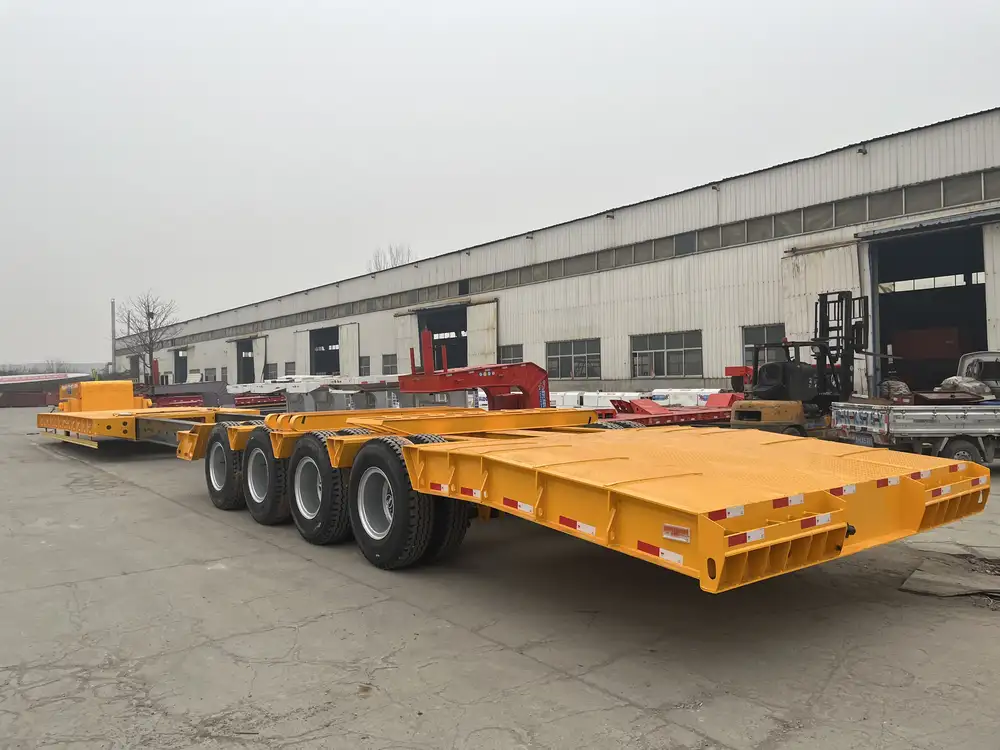
2. Loading the Trailer
- Use of Equipment: Employ excavators or loaders for filling the trailer. Ensure the load is balanced and distributed evenly.
- Weight Distribution: Load towards the front to maintain stability but avoid exceeding the maximum weight limit.
- Secure the Load: Cover with a tarp if necessary to prevent any material from spilling during transport.
3. Transporting the Load
- Adhere to Safety Regulations: Ensure your load complies with legal weight limits.
- Maintain a Steady Speed: Avoid harsh accelerations or decelerations to maintain control.
- Monitor Surroundings: Stay aware of other vehicles and road conditions; their movements may impact your trailer.
4. Unloading Procedures
Positioning: Drive to a designated unloading area, ensuring adequate space for the trailer to tilt.
Creating Safety Zones: Establish a safe perimeter around the unloading area to protect bystanders.
Activating the Hydraulic Lift:
- Engage the hydraulic system, ensuring everyone is at a safe distance.
- Gradually raise the bed of the trailer.
- Monitor the load for stability during unloading, adjusting as necessary.
Lowering the Trailer Bed: Once the load is completely discharged, lower the bed calmly to prevent damage.
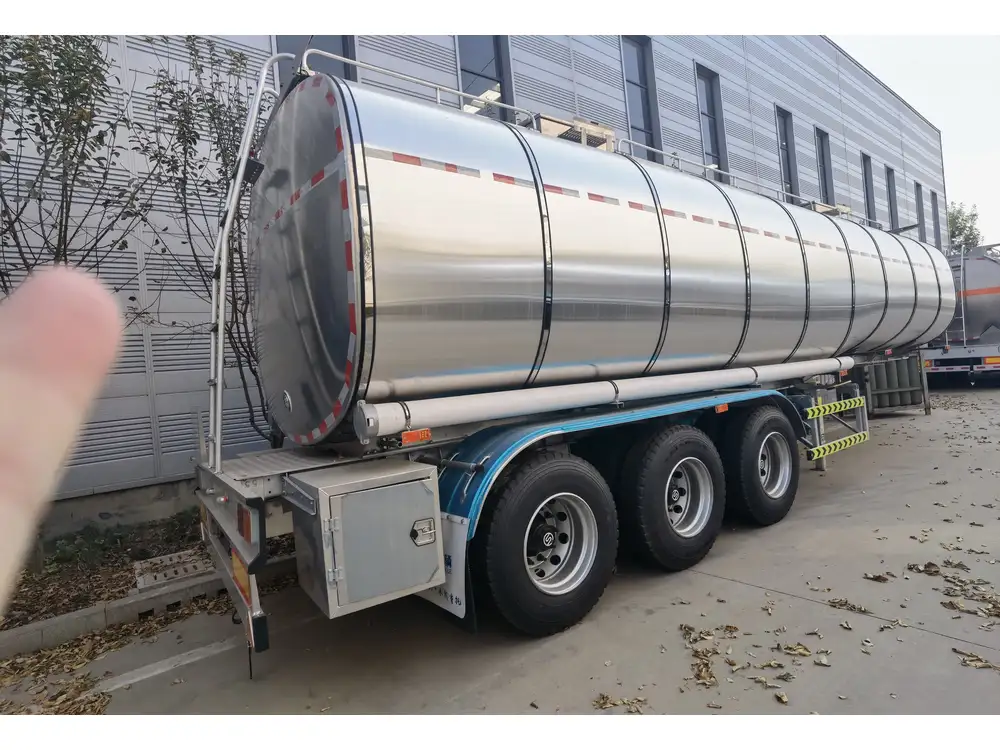
Best Practices for End Dump Trailer Operation
Safety First
When operating end dump trailers, the safety of both the operator and the surrounding environment should be prioritized.
- Always Wear Safety Gear: Hard hats, gloves, and safety glasses are non-negotiable.
- Use a Spotter: When unloading in tight spaces, particularly on construction sites, a spotter can provide essential guidance.
- Avoid Overloading: Respect the maximum payload capacity outlined by the manufacturer to maintain trailer integrity and safe driving.
Regular Maintenance
In order to ensure the longevity and performance of your end dump trailer, consistent maintenance is critical.
- Hydraulic System Servicing: Regular fluid changes and inspections should be conducted to prevent catastrophic failures.
- Tire Maintenance: Conduct monthly inspections for wear and tear. Proper tire maintenance extends the life of both the tires and the trailer.
- Chassis and Frame Checks: Look for any signs of bending or cracks that may compromise the strength of the trailer.
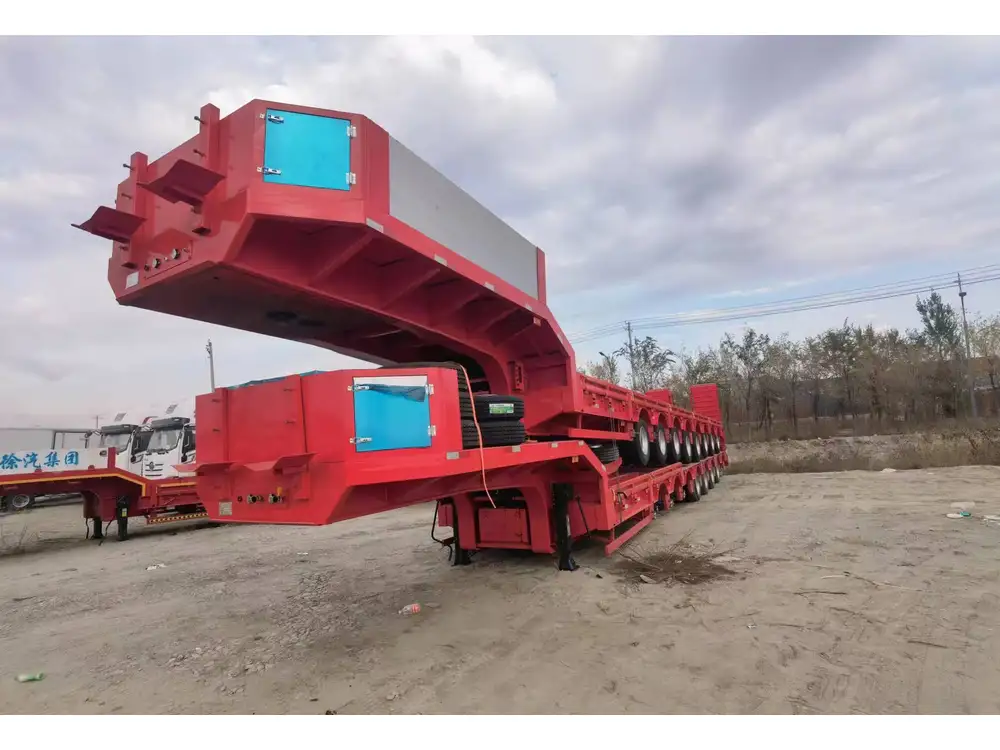
Training and Certification
- Operator Education: It is essential that operators undergo training to learn both the physical and theoretical aspects of safe trailer operation.
- Certification Programs: Encouraging operators to attain certification not only enhances their skills but also minimizes the risk of accidents.
Troubleshooting Common Issues
Hydraulic Problems
Symptoms: If the hydraulic lift is slow or unresponsive.
- Diagnosis: Check for low hydraulic fluid levels or leaks in the hydraulic lines.
Symptoms: The trailer bed does not tilt.
- Diagnosis: Inspect the hydraulic pump and control valve for malfunctions.
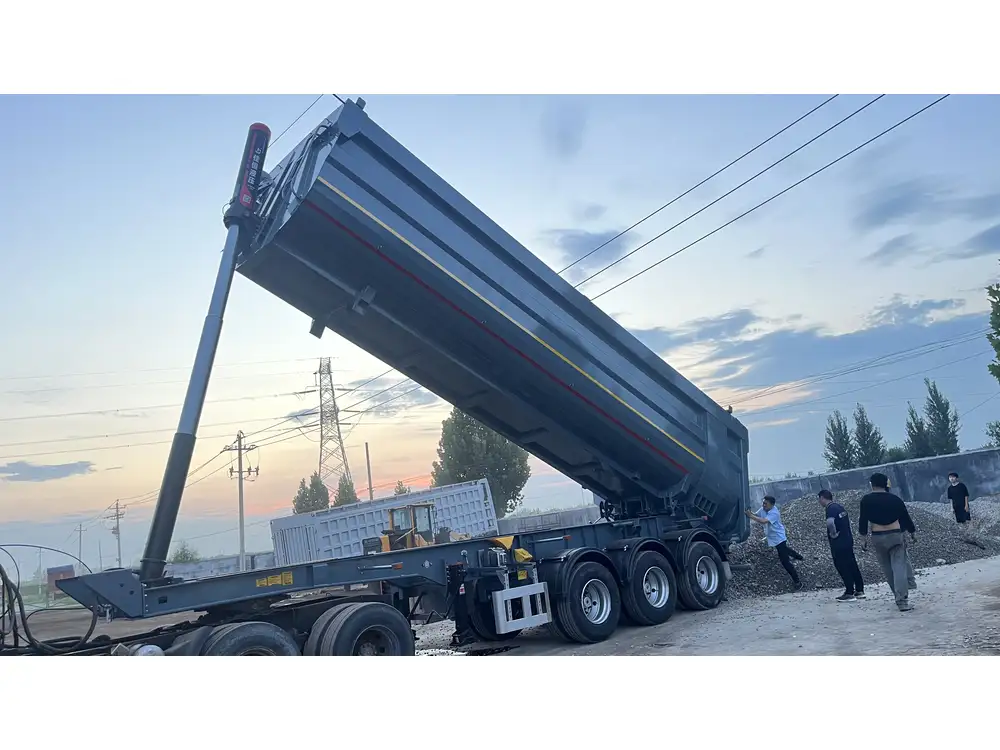
Tire Issues
Symptoms: Uneven tire wear or sudden loss of pressure.
- Diagnosis: Check for alignment issues and ensure proper inflation.
Symptoms: Excessive vibration during transit.
- Diagnosis: Inspect for damaged wheels and check the load balance.
Structural Integrity
- Symptoms: Unusual sounds during operation or visible structural wear.
- Diagnosis: Inspect the chassis and trailer frame closely, addressing any signs of fatigue or damage.
Frequently Asked Questions
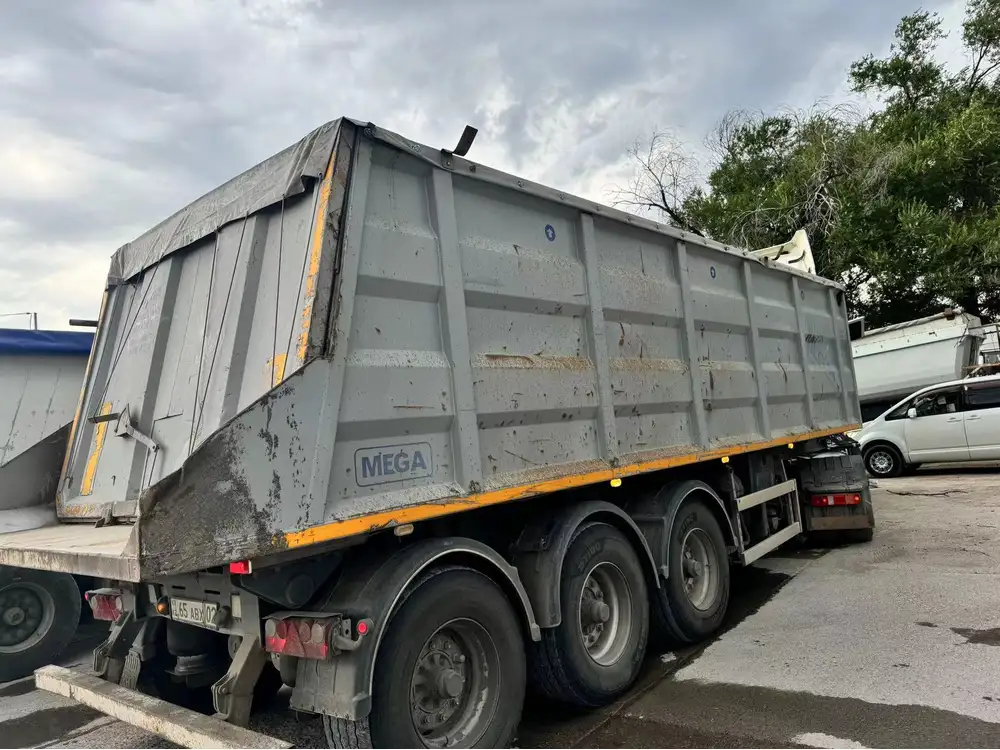
How much weight can an end dump trailer carry?
The typical payload capacity ranges from 15,000 to 30,000 pounds, but specifics vary by model. It’s crucial to adhere to the manufacturer’s guidelines.
Are there specific terrains suitable for end dump trailers?
End dump trailers excel on flat, hard surfaces. They can handle gravel or dirt roads, but extreme inclines or uneven terrains should be avoided to prevent tipping.
How do I know if my hydraulic system is functioning properly?
A well-functioning hydraulic system should elevate and lower the trailer bed swiftly and smoothly without any strange noises or delays.

Conclusion
Operating an end dump trailer involves understanding its functionalities, adhering to safety protocols, regular maintenance, and proper training. By following best practices and troubleshooting common issues, operators can ensure safe, efficient, and effective transportation of materials. The incorporation of the above knowledge will enhance your capabilities and confidence in handling an end dump trailer, leading to improved performance and safety in your operations.



